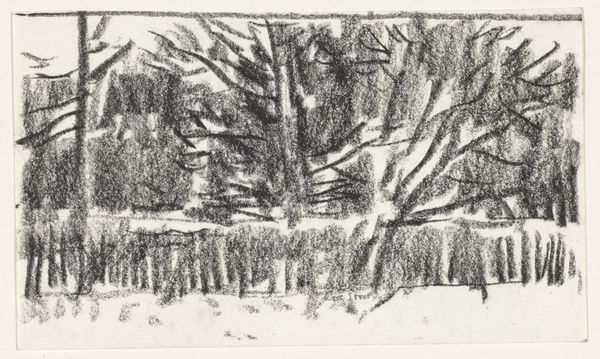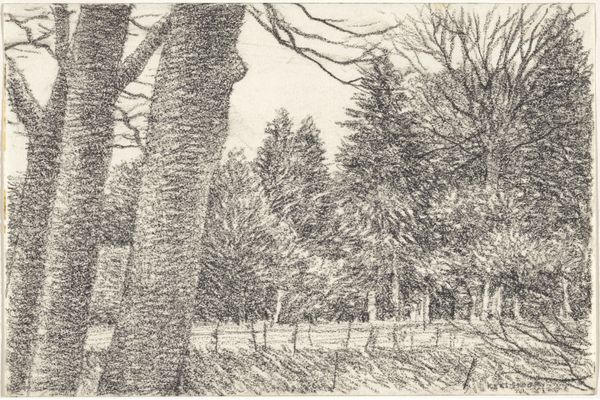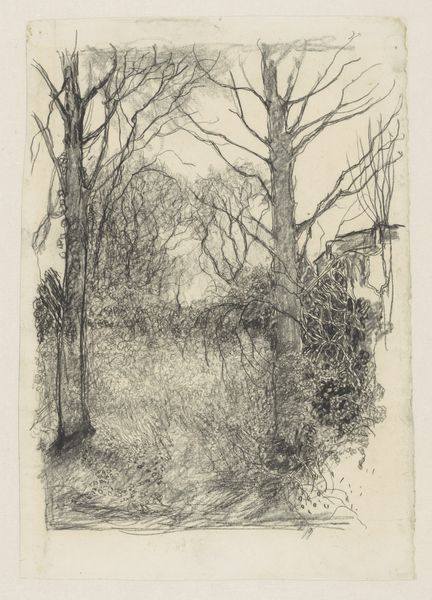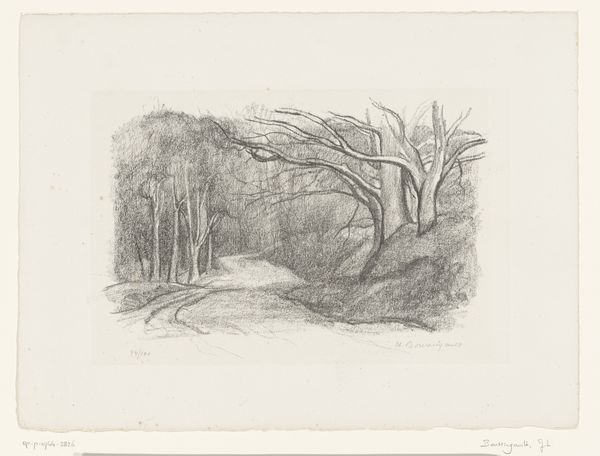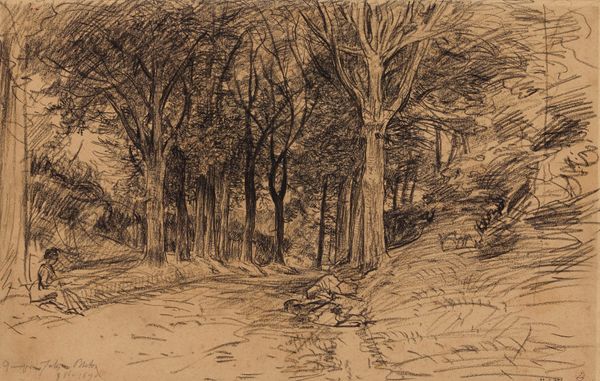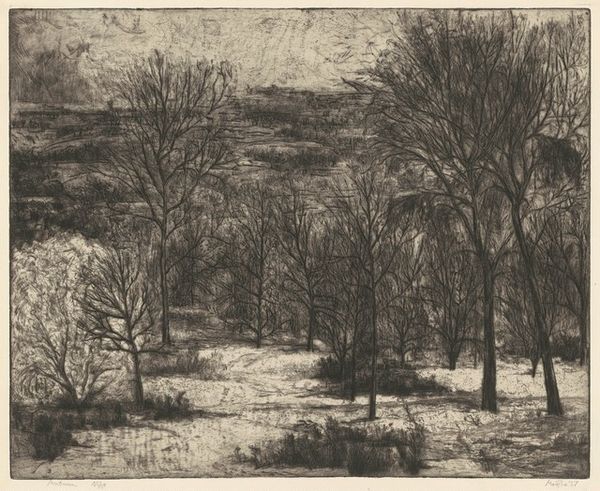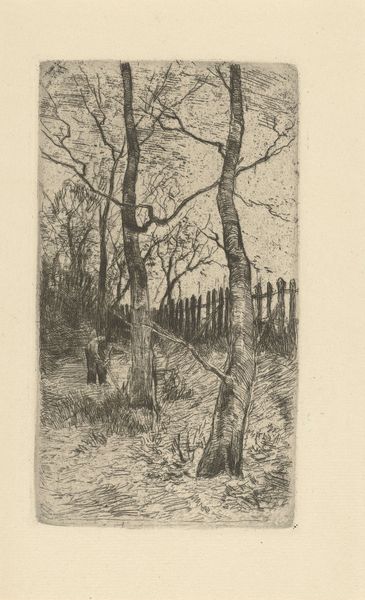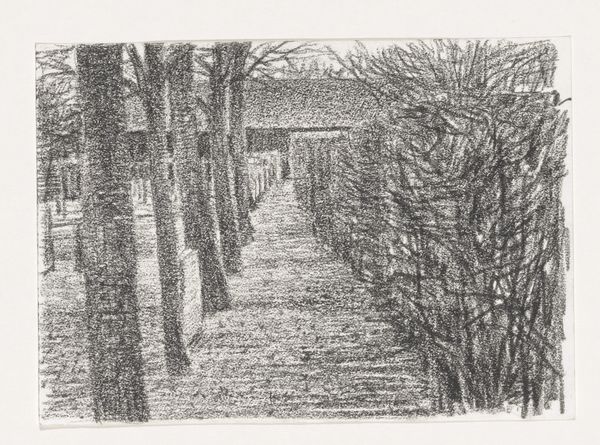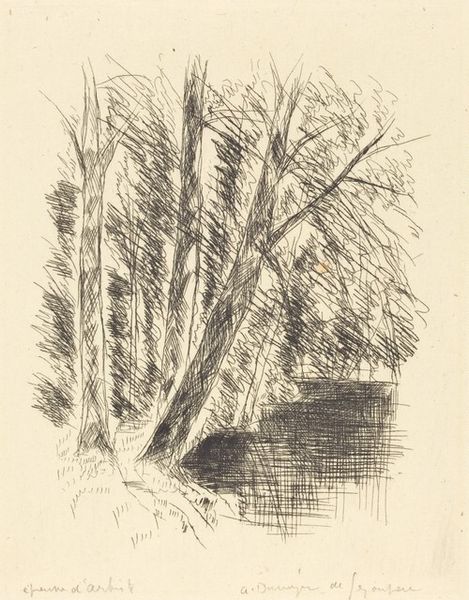
drawing, pencil
#
pencil drawn
#
drawing
#
landscape
#
pencil drawing
#
geometric
#
pencil
Dimensions: overall: 56.5 x 38.6 cm (22 1/4 x 15 3/16 in.)
Copyright: National Gallery of Art: CC0 1.0
Curator: We're looking at George Bunker's "Plateau at Le Figons," a pencil drawing from 1951. What's your first impression? Editor: Stark. And quiet. There's a certain bareness to it; the skeletal trees dominate, and it feels like the quiet stillness of late autumn or winter. The house in the background seems almost secondary to the trees themselves. Curator: I agree; the artist focuses intensely on the skeletal forms, capturing a powerful structure using relatively simple lines. The repeated angular forms generate a compelling sense of rhythm, wouldn't you agree? Editor: Absolutely. I see a dialogue between the geometric abstraction of the scene and a lived history inherent in a postwar context. It’s as though the formal reduction speaks to a broader cultural attempt to grapple with devastation through renewed design. How does the postwar climate relate to this depiction of almost desolate beauty? Curator: The artist shows his sensitivity to surface and to light; in short, Bunker translates a scene into something abstract, focusing primarily on the visual experience. We see texture, depth, contrast – a masterly treatment of a medium rendered simply in tone. Editor: And isn’t the "simple tone" you note tied to postwar scarcity? Many artists moved toward art povera aesthetics – working with what was immediately at hand: found objects, inexpensive material like charcoal or, here, humble pencil. Bunker might also be echoing modernist movements' interests, the "return to order" we often see paralleled in this period of both stark realities and modernist reassessments after the horrors of the Second World War. Curator: The artist certainly emphasizes spatial relationships, particularly how foreground elements lead to the middle ground and a compressed sense of background. In doing so, they reveal the core essence of geometric composition in landscape form. Editor: I see instead that Bunker uses an unadorned means of creation that reflects themes of the time. The image’s austerity communicates directly with audiences reflecting collective grief in response to global disruption, ultimately creating a quiet and powerful scene that echoes into our own era of disruption. Curator: A stimulating reflection! Thank you. Editor: And to you as well!
Comments
No comments
Be the first to comment and join the conversation on the ultimate creative platform.
